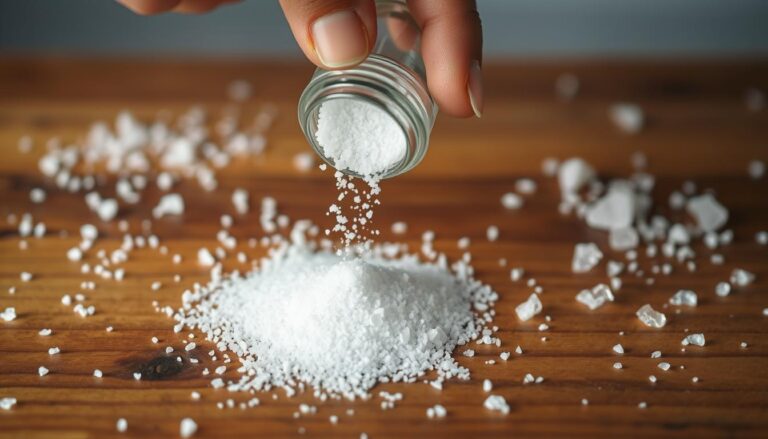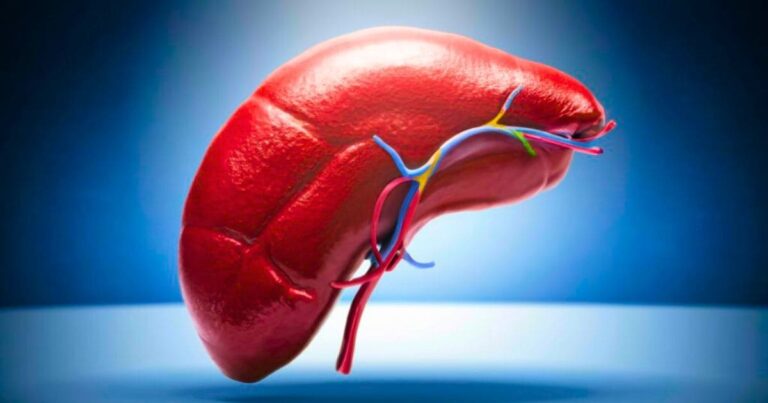Why do some people struggle with belly fat despite rigorous diets and workouts? The answer lies beyond calorie counting. Visceral fat, the deep abdominal fat surrounding organs, poses serious health risks, including heart disease and diabetes.
Spot reduction is a myth. Johns Hopkins research confirms low-carb diets burn fat more effectively than low-fat plans. Sustainable weight loss requires a holistic approach—nutrition, exercise, and lifestyle adjustments work synergistically.
This guide outlines 10 evidence-backed steps to lose belly fat safely. Prioritizing long-term results over quick fixes ensures lasting metabolic improvements and overall well-being.
Key Takeaways
- Visceral fat increases risks for heart disease and diabetes.
- Low-carb diets outperform low-fat diets for fat loss.
- Combining diet, exercise, and lifestyle changes delivers optimal results.
- Spot reduction is ineffective; holistic strategies work best.
- Evidence-based methods ensure sustainable belly fat reduction.
Why Belly Fat Is More Than Just a Cosmetic Concern
Not all fat is created equal—visceral fat poses serious metabolic dangers. Unlike subcutaneous fat stored under the skin, this deep abdominal fat wraps around organs like the liver and pancreas, disrupting hormone balance and insulin sensitivity.
Understanding Visceral vs. Subcutaneous Fat
Visceral fat actively secretes inflammatory cytokines, chemicals linked to insulin resistance. Subcutaneous fat, while stubborn, lacks this systemic impact. The Framingham Heart Study found diets rich in whole grains reduced abdominal fat by 10% over five years.
Body mass index (BMI) often fails to detect visceral fat. A person with a “normal” BMI but a waist over 35″ (women) or 40″ (men) may still face elevated cardiovascular risks.
Health Risks Linked to Excess Abdominal Fat
NIH research shows visceral fat increases type 2 diabetes risk by 330%. CDC data associates abdominal obesity with a 28% higher mortality rate due to its role in heart disease and stroke.
- Inflammation from visceral fat damages blood vessels.
- Waist circumference predicts health risks better than weight alone.
- Chronic diseases develop silently, often before visible weight gain.
What’s the Quickest Way to Get Rid of Stubborn Belly Fat? Start Here
Contrary to popular belief, crunches alone won’t melt abdominal fat. NIH studies demonstrate fat mobilization occurs systemically, not just in exercised areas. Sustainable weight loss requires strategies addressing metabolism, hormones, and activity patterns.

High-intensity interval training (HIIT) creates superior fat-burning effects. ACE research shows 25-minute HIIT sessions torch 30% more calories than steady-state cardio. This metabolic boost continues for hours post-workout.
“Combining resistance and aerobic training triggers 14% greater fat oxidation than either method alone.”
Cortisol management proves equally crucial. Elevated stress hormones promote visceral fat storage by disrupting circadian rhythms. Morning sunlight exposure and consistent sleep patterns help regulate this fat-storage mechanism.
Three-Phase Implementation Strategy
| Phase | Focus | Duration |
|---|---|---|
| 1: Metabolic Reset | HIIT + protein pacing | Weeks 1-4 |
| 2: Nutrient Optimization | High-fiber, anti-inflammatory diet | Weeks 5-8 |
| 3: Maintenance | Strength training for muscle mass | Ongoing |
The American Heart Association recommends 150 minutes of moderate activity weekly for lasting results. Those aiming to lose belly fat should incorporate both aerobic and resistance exercises 3-5 times weekly.
1. Curb Carbs, Not Fats
Carbohydrate reduction often outperforms fat restriction for abdominal fat loss. A Johns Hopkins study found participants on a low-carb diet lost 10 pounds more than low-fat dieters in six months. This approach targets visceral fat by optimizing insulin sensitivity, a key regulator of fat storage.
The Science Behind Low-Carb Diets and Fat Loss
Insulin directs excess glucose into fat cells, particularly around the abdomen. Reducing carbs lowers insulin spikes, prompting the body to burn stored fat for energy. Soluble fiber, like that in oats and beans, further reduces belly fat gain by 3.7% per 10g daily.
Best Low-Carb Food Swaps
Prioritize high-fiber, low-glycemic alternatives to maintain stable blood sugar levels. Below are net carb comparisons per serving:
| High-Carb Food | Low-Carb Substitute | Net Carbs (g) |
|---|---|---|
| White rice (1 cup) | Cauliflower rice (1 cup) | 3 vs 25 |
| Pasta (2 oz) | Zucchini noodles (2 oz) | 5 vs 42 |
| Bread (1 slice) | Lettuce wrap | 1 vs 15 |
Two effective low-carb diet approaches:
- Ketogenic: Under 50g carbs/day, high healthy fats.
- Mediterranean: 50–100g carbs/day, emphasizes olive oil and fish.
Concerns about cholesterol? Research shows low-carb diets often improve HDL (“good” cholesterol) while reducing triglycerides.
2. Adopt a Sustainable Eating Plan (Not a Fad Diet)
Nutrition science reveals why balanced eating plans trump extreme dieting for fat loss. Unlike temporary fixes, sustainable approaches modify eating patterns while preserving metabolic health. The NIH confirms high-protein diets boost calorie burn by 80-100kcal daily through thermogenesis.

High-Protein and High-Fiber Choices
Protein-rich foods increase satiety and preserve lean muscle during weight loss. For optimal results, calculate daily protein needs using this formula:
- Sedentary adults: 0.36g per pound of body weight
- Active individuals: 0.5-0.7g per pound
- Athletes: 0.8-1g per pound
Soluble fiber slows digestion, reducing blood sugar spikes that promote fat storage. Top fiber sources include:
| Food | Fiber (g per serving) | Protein (g per serving) |
|---|---|---|
| Lentils | 15.6 | 18 |
| Chia seeds | 10.6 | 4.7 |
| Avocado | 6.7 | 2 |
Foods to Avoid for Belly Fat Reduction
Primate studies show trans fats increase abdominal fat by 33%. The FDA mandates labeling of partially hydrogenated oils, but these hidden sources often slip through:
- Non-dairy creamers
- Microwave popcorn
- Commercial baked goods
Even “healthy” foods like flavored yogurt can contain 19g added sugar per serving. Compare nutrition labels carefully, as sugar appears under 61 different names including:
“Barley malt, dextrose, and fruit juice concentrate all function identically to table sugar in the body.”
For busy schedules, batch-cook these staples weekly:
- Grilled chicken breasts (portioned)
- Roasted mixed vegetables
- Hard-boiled eggs
3. Prioritize Aerobic Exercise
Scientific evidence highlights aerobic exercise as a cornerstone for visceral fat reduction. Unlike spot-reduction myths, cardio workouts trigger whole-body fat oxidation, with studies showing 300 minutes weekly reduces fat mass by 11%.
Optimal Duration and Intensity for Fat Burning
Fat oxidation peaks at 60–70% of maximum heart rate. Calculate your target zone:
- Subtract age from 220 for max HR.
- Multiply by 0.6 and 0.7 for range.
Brisk walking, a low-impact option, burns 30% more visceral fat than inactivity. For time efficiency, HIIT (High-Intensity Interval Training) alternates 30-second sprints with 1-minute recovery, burning calories up to 24 hours post-workout.
Top Cardio Activities to Shrink Your Waistline
Compare MET (Metabolic Equivalent) values for popular physical activity:
| Activity | MET Value | Calories/Hour (155 lb person) |
|---|---|---|
| Swimming | 5.8 | 422 |
| Cycling | 7.5 | 546 |
| Rowing | 6.0 | 437 |
For joint-sensitive individuals, water aerobics or elliptical training offer low-impact alternatives. Wearable tech like heart rate monitors helps track progress and maintain intensity.
4. Incorporate Strength Training
Building lean muscle accelerates fat loss more effectively than cardio alone. Strength training reshapes body composition by increasing muscle mass while simultaneously burning calories. Research confirms this dual-action approach targets visceral fat more efficiently than aerobic exercise alone.

The Metabolic Power of Muscle Tissue
Every pound of muscle burns 6 calories daily at rest, according to Mayo Clinic studies. This metabolic advantage compounds over time, creating a sustained fat-burning effect. Compound movements like squats and deadlifts elevate EPOC (excess post-exercise oxygen consumption) by 38% compared to isolation exercises.
NEAT (non-exercise activity thermogenesis) also increases with greater muscle mass. Simple daily movements burn more calories when performed with added lean tissue. This explains why resistance training often yields better long-term results than calorie restriction alone.
Practical Weightlifting Routines
Beginners should prioritize full-body workouts over split routines for fat loss. This approach stimulates multiple muscle groups in each session, maximizing metabolic impact. A sample three-day schedule:
- Day 1: Squats, push-ups, rows (3 sets of 8-12 reps)
- Day 2: Lunges, overhead presses, planks (3 circuits)
- Day 3: Deadlifts, pull-ups, farmer’s carries (2-3 sets)
Essential home gym equipment under $200:
| Equipment | Price Range | Versatility |
|---|---|---|
| Adjustable dumbbells | $100-$150 | High |
| Resistance bands | $20-$50 | Medium |
| Yoga mat | $15-$30 | Low |
“Women gain muscle at comparable rates to men when accounting for body size differences. Hormonal variations simply alter the distribution pattern.”
For those new to weights, modified versions build confidence:
- Wall push-ups instead of floor variations
- Chair-assisted squats for proper form
- Resistance band rows for back development
Consistent strength training preserves lean tissue during weight loss, preventing the metabolic slowdown common with dieting alone. This makes it essential for sustainable belly fat reduction.
5. Read Labels and Avoid Processed Foods
Food labels reveal hidden truths about what we consume daily. The American Heart Association found 74% of packaged items contain added sweeteners. Understanding labels helps identify processed foods that sabotage weight loss efforts despite “healthy” marketing claims.
Hidden Sugars and Trans Fats to Watch For
Manufacturers use 61 different names for added sugar, including:
- Evaporated cane juice (still 99% sucrose)
- Brown rice syrup (higher glycemic index than table sugar)
- Fruit juice concentrate (stripped of fiber benefits)
Though the FDA banned artificial trans fats in 2021, products with less than 0.5g per serving can claim “0g trans fat”. These accumulate quickly in typical diets.
| Common “Healthy” Foods | Actual Sugar Content | Better Alternative |
|---|---|---|
| Flavored yogurt (6oz) | 19g (4.7 tsp) | Plain Greek yogurt + berries |
| Granola (1/2 cup) | 12g (3 tsp) | Raw nuts and seeds mix |
| Tomato sauce (1/2 cup) | 10g (2.5 tsp) | Homemade sauce with fresh tomatoes |
“Low-fat products average 20% more sugar than regular versions to compensate for taste. Consumers unknowingly trade fat for empty calories.”
Three tools simplify ingredients analysis:
- Fooducate app (scans barcodes for hidden additives)
- EWG’s Food Scores database (rates 80,000+ products)
- USDA’s FoodData Central (official nutrient profiles)
Batch cooking eliminates reliance on processed foods. Weekly prep of these staples saves time:
- Roasted vegetable medleys (store for 5 days)
- Grilled lean proteins (freeze in portions)
- Whole grain bases like quinoa or brown rice
6. Manage Stress Levels
Chronic stress triggers biological responses that directly impact fat distribution. The hypothalamic-pituitary-adrenal (HPA) axis, the body’s stress control system, releases cortisol—a hormone linked to belly fat storage. Studies show prolonged stress increases waist circumference by 1.6cm annually.

Cortisol’s Role in Fat Storage
Elevated cortisol signals the body to store energy as visceral fat. This evolutionary survival mechanism becomes harmful under chronic stress. NIH research confirms cortisol:
- Slows metabolism by up to 15%.
- Increases cravings for high-calorie foods.
- Disrupts insulin sensitivity, promoting fat accumulation.
Stress-Reduction Techniques That Work
Harvard studies found mindfulness reduces cortisol by 25% in 8 weeks. Compare two evidence-based methods:
| Technique | Effectiveness | Time Commitment |
|---|---|---|
| HRV Biofeedback | Improves stress resilience by 40% | 10 mins/day |
| Guided Meditation | Lowers cortisol long-term | 15 mins/day |
“Adaptogens like ashwagandha and rhodiola reduce stress hormone levels by modulating HPA axis activity.”
Quick workplace relaxation practices:
- 4-7-8 breathing (inhale 4 sec, hold 7, exhale 8).
- Desk stretches every 90 minutes.
- Blue-light blocking glasses for screen time.
Prioritizing 7–9 hours of sleep further stabilizes cortisol rhythms. Trauma-informed approaches, like therapy for emotional eating, address root causes of stress-related weight gain.
7. Optimize Your Sleep Routine
Missing just one hour of sleep alters hunger hormones significantly. A 16-year study shows sleeping under 5 hours increases obesity risk by 55%. Johns Hopkins research reveals sleep apnea patients have triple the visceral fat of healthy sleepers.
How Sleep Regulates Fat Storage
The orexin system controls both wakefulness and metabolism. When disrupted, it increases cravings for high-calorie foods by 45%. This explains why poor sleep often leads to weight gain even without calorie surplus.
Evidence-Based Sleep Hygiene Checklist
- Light control: Use blackout curtains and avoid screens 90 minutes before bed
- Temperature: Maintain 60-67°F room temperature for optimal melatonin production
- Schedule: Consistent bed/wake times (even weekends) regulate circadian rhythms
CBT-I (Cognitive Behavioral Therapy for Insomnia) techniques improve sleep efficiency by 25%. These include stimulus control and sleep restriction methods.
Wearable Sleep Trackers Compared
| Device | Accuracy | Best Feature |
|---|---|---|
| Oura Ring | 92% (validated vs polysomnography) | Body temperature tracking |
| Fitbit Sense | 85% | Sleep score breakdown |
“Magnesium glycinate supplementation improves sleep quality by 58% in deficient individuals by activating GABA receptors.”
Natural Sleep Support Strategies
Top magnesium-rich foods for recovery:
- Pumpkin seeds (156mg per ounce)
- Spinach (157mg per cooked cup)
- Black beans (120mg per cup)
For shift workers, these circadian reset strategies help:
- Bright light therapy during waking hours
- Strategic caffeine cutoff 8 hours before sleep
- Meal timing aligned with activity periods
8. Try Intermittent Fasting
Strategic meal timing influences fat metabolism more profoundly than previously understood. Research in Cell Metabolism shows intermittent fasting reduces visceral fat by 4% in 12 weeks through enhanced lipolysis. This approach works by aligning eating patterns with natural circadian rhythms.
Comparing Popular Fasting Protocols
Different fasting methods suit various lifestyles and goals. A 2023 JAMA study ranked these approaches by effectiveness:
| Method | Schedule | Fat Loss |
|---|---|---|
| 16:8 | 16-hour fast daily | 3.1% body fat |
| 5:2 | 5 normal days, 2 restricted (500kcal) | 8% greater loss than daily CR |
| Eat-Stop-Eat | 24-hour fasts 1-2x weekly | Enhanced autophagy |
Key considerations when choosing:
- 16:8 offers the easiest transition for beginners
- 5:2 may improve insulin sensitivity more dramatically
- Eat-Stop-Eat triggers cellular cleanup after 18+ hours
Implementing Fasting Safely
Extended fasts require electrolyte management to avoid side effects. The American Journal of Clinical Nutrition recommends:
- Sodium: 1/2 tsp pink salt daily
- Potassium: 1/4 tsp cream of tartar in water
- Magnesium: 400mg glycinate at bedtime
“Breaking fasts with protein-first meals prevents blood sugar spikes and subsequent overeating by 32%.”
Common pitfalls to avoid:
- Compensatory overeating during feeding windows
- Neglecting hydration during fasting periods
- Starting with advanced protocols as a beginner
Note: Contraindications exist for pregnant women, type 1 diabetics, and those with eating disorder histories. Always consult a physician before beginning any fasting regimen.
9. Leverage Probiotics and Gut Health
Emerging research reveals an unexpected ally in fat reduction—the gut microbiome. The digestive system hosts trillions of bacteria that influence metabolism, inflammation, and fat storage patterns. A 2023 Nature study found specific microbial strains can alter calorie absorption by 15%.
The Gut-Fat Connection Explained
The gut-brain-adipose axis links intestinal bacteria to fat distribution. Certain microbes produce short-chain fatty acids that:
- Reduce fat cell formation by 20-30%
- Enhance insulin sensitivity
- Decrease systemic inflammation
Lactobacillus strains specifically reduce waist circumference by 1.3 inches within 12 weeks. Kefir consumption shows even greater impact, decreasing visceral fat by 8% in clinical trials.
Top Probiotic Sources Compared
| Source | CFU Count | Key Strains |
|---|---|---|
| Yogurt (Greek) | 1-5 billion/serving | L. acidophilus, Bifidobacterium |
| Sauerkraut | 3-10 billion/cup | Leuconostoc, Pediococcus |
| Supplements | 10-50 billion/capsule | Multi-strain formulations |
“Prebiotic fibers like inulin and resistant starch increase probiotic efficacy by 40% through enhanced bacterial growth.”
For optimal gut health, combine these prebiotics with probiotics:
- Jerusalem artichokes (18g inulin/cup)
- Green bananas (resistant starch)
- Dandelion greens (4g fiber/cup)
Special Considerations
Those with SIBO (small intestinal bacterial overgrowth) may experience bloating from probiotics. A low-FODMAP diet often helps before reintroducing beneficial bacteria.
Cutting-edge FMT (fecal microbiota transplantation) research shows promise for obesity management. Early trials demonstrate 22% greater fat loss compared to placebo groups when combining FMT with lifestyle changes.
10. Build a Supportive Environment
Human behavior studies confirm environment shapes health outcomes more than willpower alone. The American Council on Exercise found group fitness participants maintain health habits 72% of the time versus 43% for solo exercisers. Shared activities like cooking classes reduce unhealthy eating by 38%, proving social support accelerates progress.
The Science of Social Contagion
Harvard research shows obesity spreads through social networks with 57% increased risk if a close friend gains weight. Conversely, positive lifestyle changes create ripple effects. Three key mechanisms drive this phenomenon:
- Normative influence: Adopting group-approved behaviors
- Shared environments: Workplace cafeterias or gym memberships
- Emotional reinforcement: Celebrating milestones together
Digital vs In-Person Communities
Technology bridges gaps for those lacking local accountability partners. Compare popular platforms:
| Platform | Active Users | Unique Feature |
|---|---|---|
| Strava | 100M+ | Segment leaderboards |
| Peloton | 7M | Live class shoutouts |
| MyFitnessPal | 200M | Recipe challenges |
“Virtual workout groups achieve 82% adherence rates when combining live streaming with progress tracking—surpassing traditional gym attendance.”
Setting Healthy Boundaries
Navigating unsupportive relationships requires tact. Start with “I” statements:
- “I’m prioritizing my energy by skipping happy hour tonight”
- “I’d love your help staying on track with meal prep Sundays”
- “I feel supported when we walk together instead of watching TV”
Workplace wellness programs boost productivity by 11%. Effective implementations include:
- Standing desk conversion initiatives
- Group step challenges
- Healthy potluck rotations
Conclusion: Consistency Is Key to Long-Term Success
Sustainable results emerge from daily commitment, not temporary fixes. National Weight Control Registry data shows 78% of successful maintainers track progress weekly. This consistency builds neural pathways, making healthy habits automatic over time.
For long-term success, implement a 90-day phase-in approach. Start with two foundational changes like hydration and walking. Add new behaviors monthly while monitoring energy and recovery.
Plateaus signal adaptation, not failure. Alternate between calorie cycling and lifestyle changes every 6-8 weeks. Deload periods (reduced intensity) prevent burnout while preserving consistency.
Track non-scale victories:
- Improved sleep quality
- Increased stamina during daily tasks
- Consistent energy levels
View maintenance as metabolic protection. Prioritizing organ health over aesthetics creates self-reinforcing motivation. Lasting change stems from respecting biological rhythms through steady effort.





